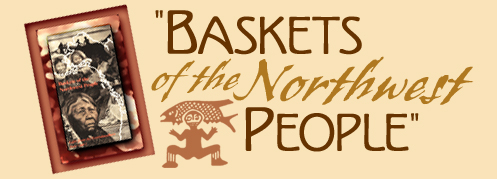
Baskets Of The Northwest People:
Gifts From The Grandmothers
A comprehensive study of baskets woven in the Pacific Northwest during a renaissance of basket making, circa 1860 through the 1930s. Basketry expert Natalie Linn provides insights on each basket. Klickitat basketmaker Nettie Jackson talks about her process of becoming a weaver while weaving a basket. Storyteller and singer Johnny Moses introduces the program with a song and speaks of Native traditions.
Included are baskets from the Aleut, Eskimo, Tlingit, Haida, Tsimshian, West Coast People (Makah, Nootka) Thompson River, Chilcotin, Lillooet, Skokomish, Snohomish, Nisqually, Quinault, Chehalis, Wasco, Wishram, Cowlitz and Klickitat People. Interwoven in these baskets are the history, imagination, and spirit of the people who made them.
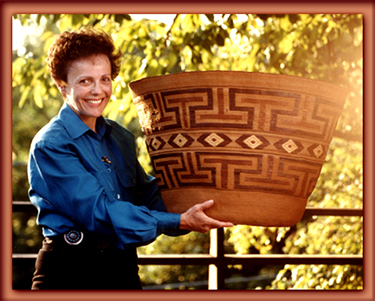
"This is the largest, most beautiful example of a Tlingit spruce root basket I have ever seen; one that is made with geometric motif, one that is made in the traditional way, with bear grass, dyed bear grass, and done traditionally with what is known as false embroidery. You do not see the weaving on the inside on any Tlingit basket.
These baskets were used in the potlatch ceremony, maybe to hold a feast dish, maybe to hold a great food dish that was served to all the invited guests. It is a prime example, a traditional example of Tlingit basketry. We have what is known as two matching bands in the body of the basket, and a tying band in the middle of the basket. Appropriate margin on the top of the basket should be a little bit smaller or match the margin on the bottom of the basket. If you don’t have a margin on the top of your basket, chances are the basket had broken somewhere along the way and some one has cut off the basket. So be very wary of equal margins on a Tlingit basket and a nice binding off rim."
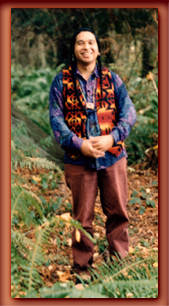
Storyteller:
Johnny Moses, Tulalip Nation
(Whis stem men knee)
"The older people, the Grandmothers, they believed that all the baskets had a song--a song and a story to tell. The baskets were very important in the Native American culture. All our stories and our songs and our feelings about our people, the people that we loved, are woven into the baskets. When looking at some of the designs in the baskets, sometimes you can feel those people, those ancestors from way back."
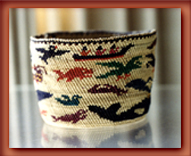
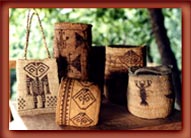
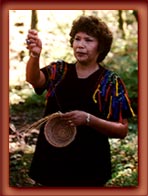
Basket Weaver:
Nettie Jackson, Klickitat
"It was a special gift right from the beginning for me and my People.
It was my Mother’s death that brought on this willingness and eagerness to learn this (basket making), I quit it about a thousand times when I first learned. It took me four years just to learn to process my own roots, to go up to the mountains, dig them out, and peel them down. Sometimes in one day what I get out of the ground will take me maybe a month to process.
In this work of basketry that I’ve learned, in my heart I’ve always thanked my creator for allowing me to be this way, to pick this up in the time and age that it was being lost. I appreciate people coming and being interested in helping me preserve it; I’m thankful for that. I’m thankful for the many friends that I've met through my work... I’m really grateful that I’ve learned to do this. It has taken me a long ways. I feel that it has helped me and my People both, to explain to the outside world what we're all about."
